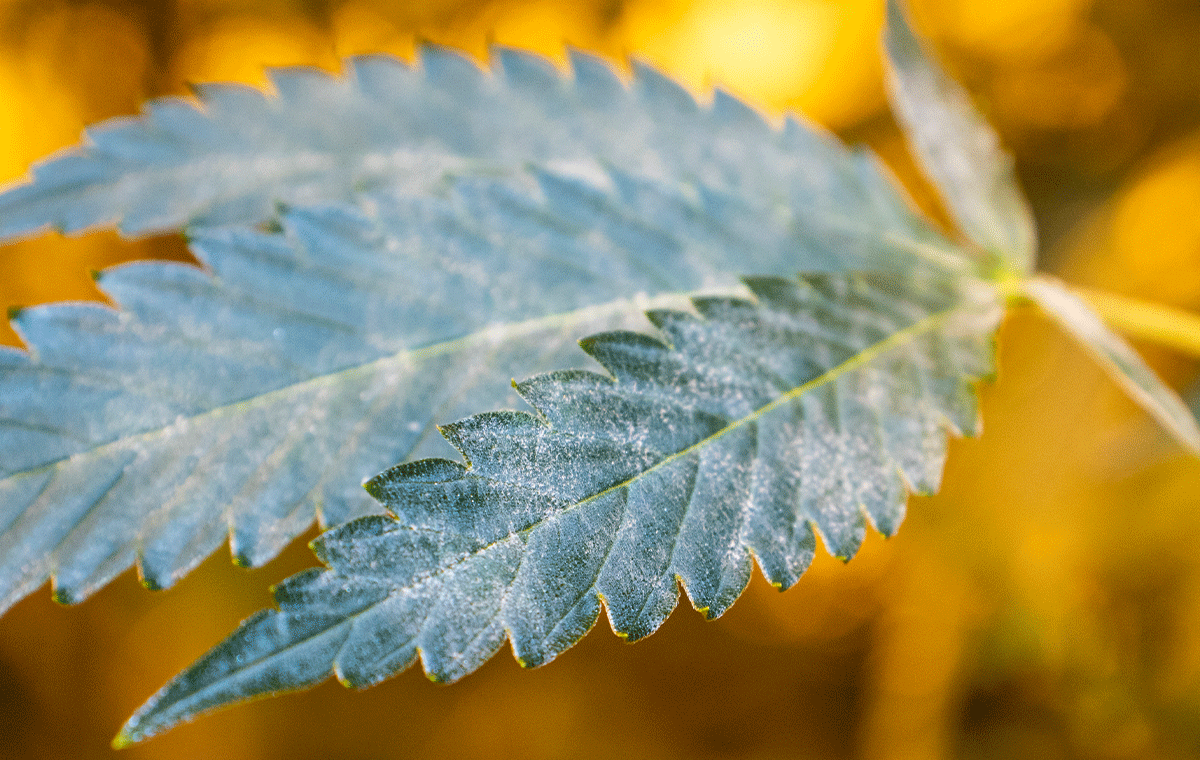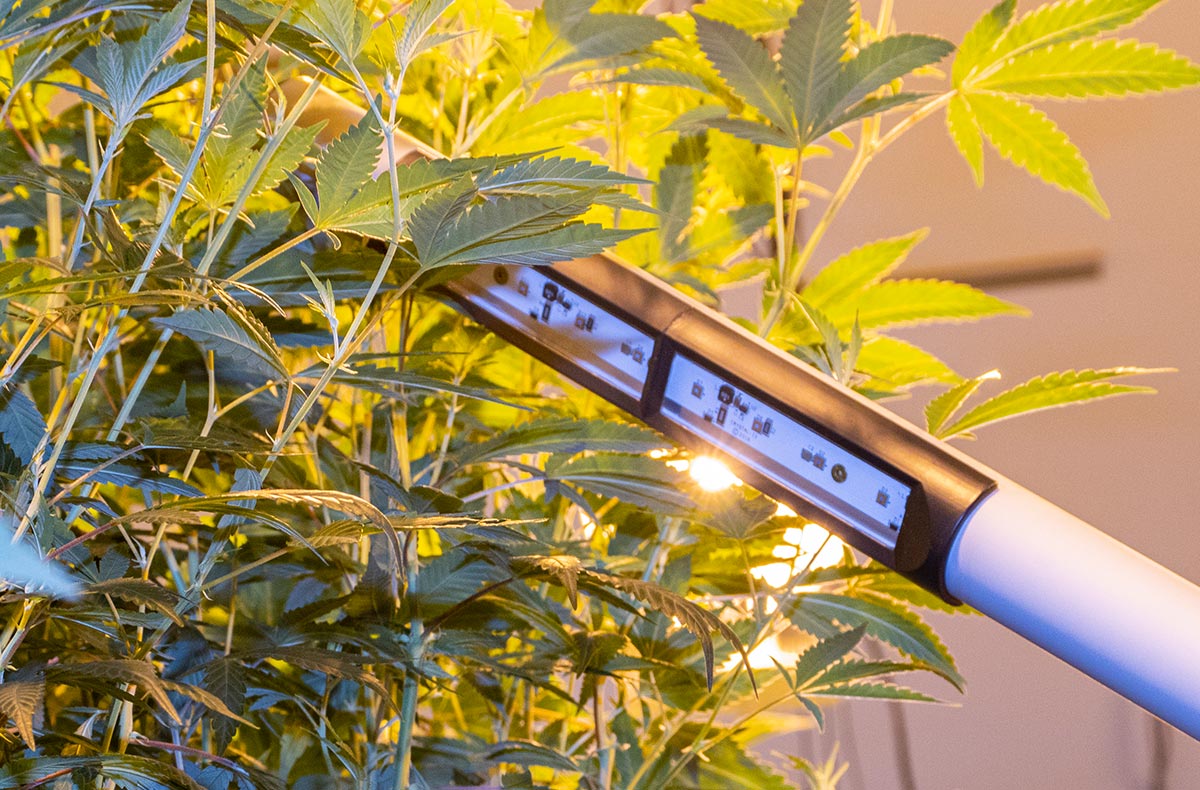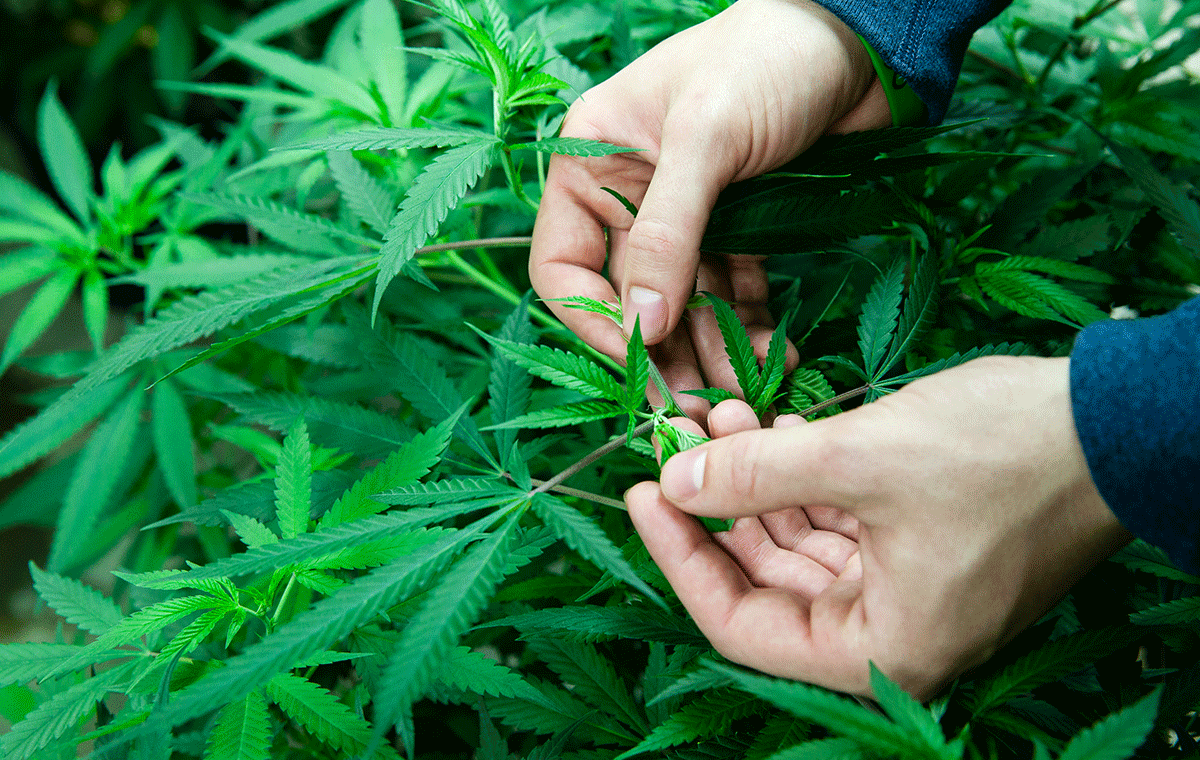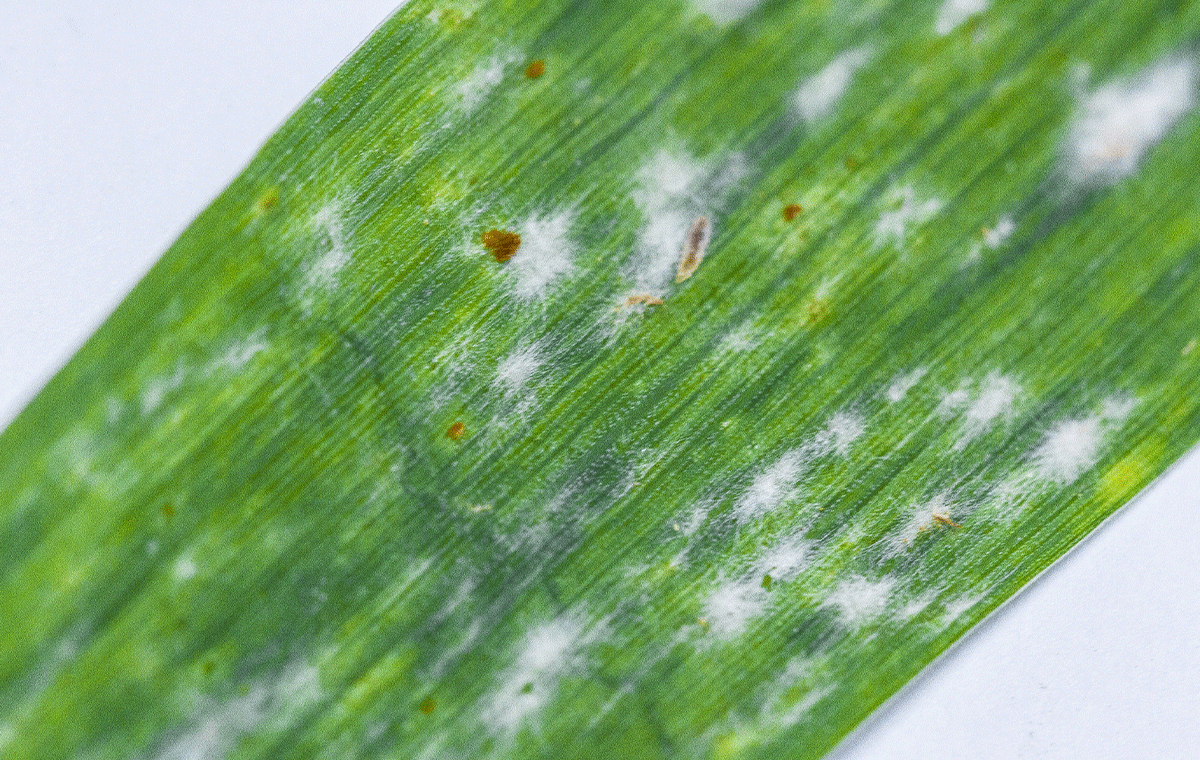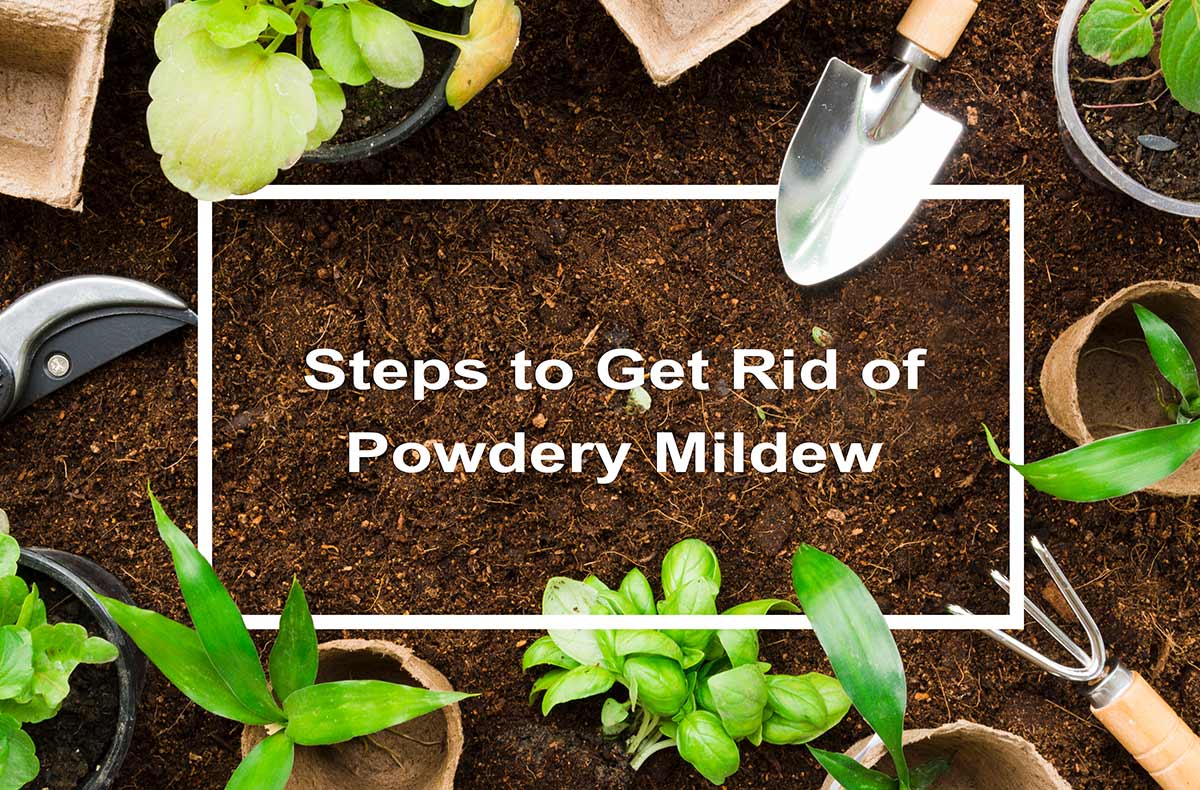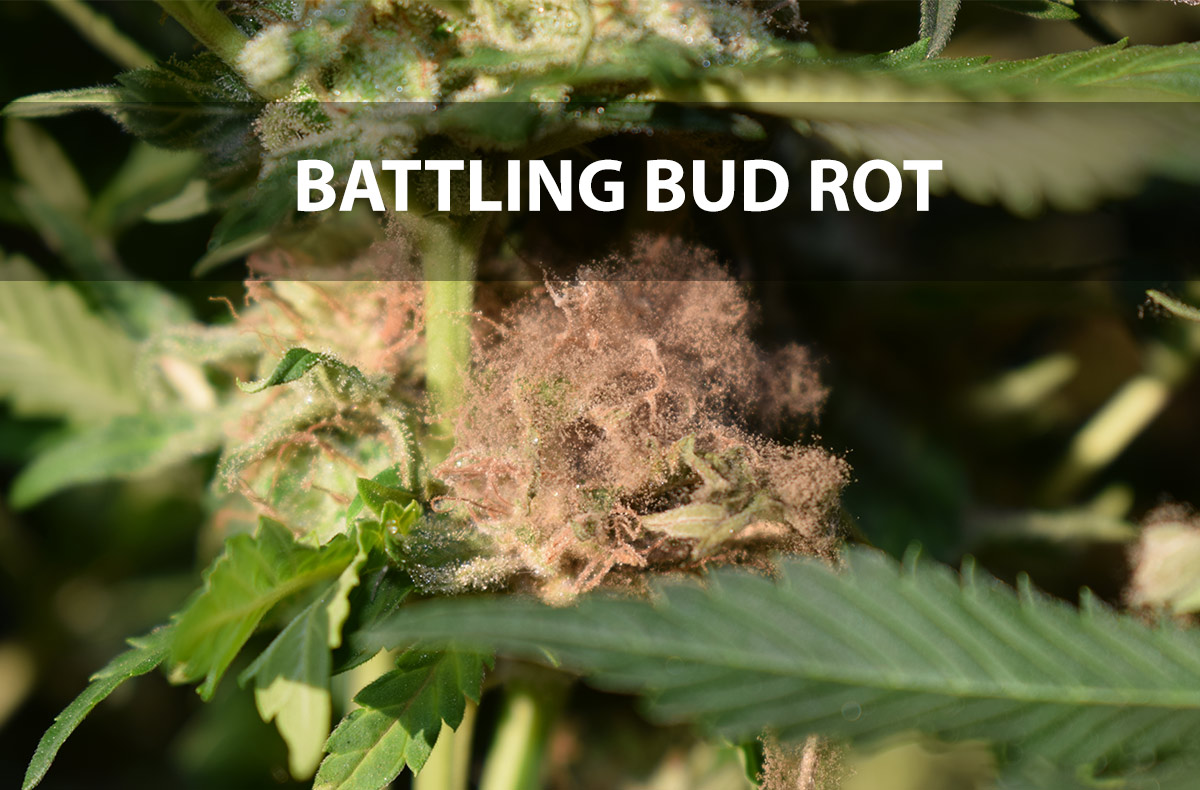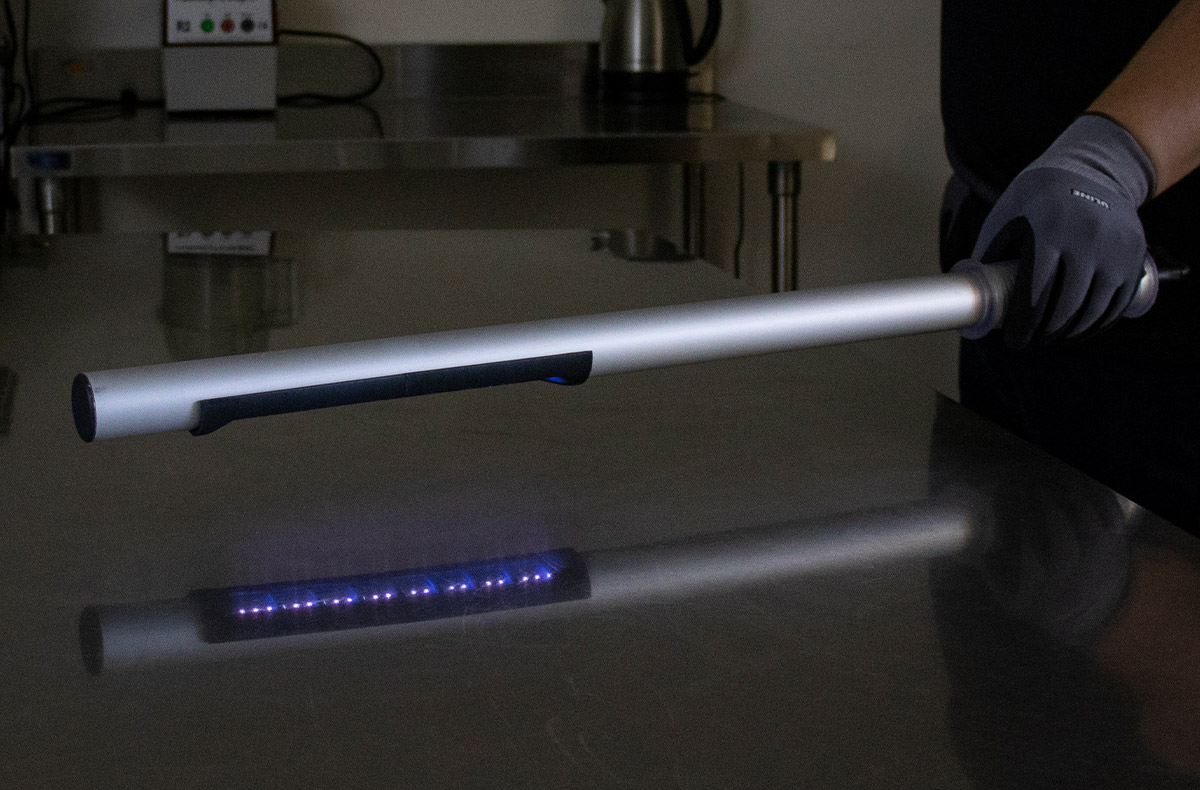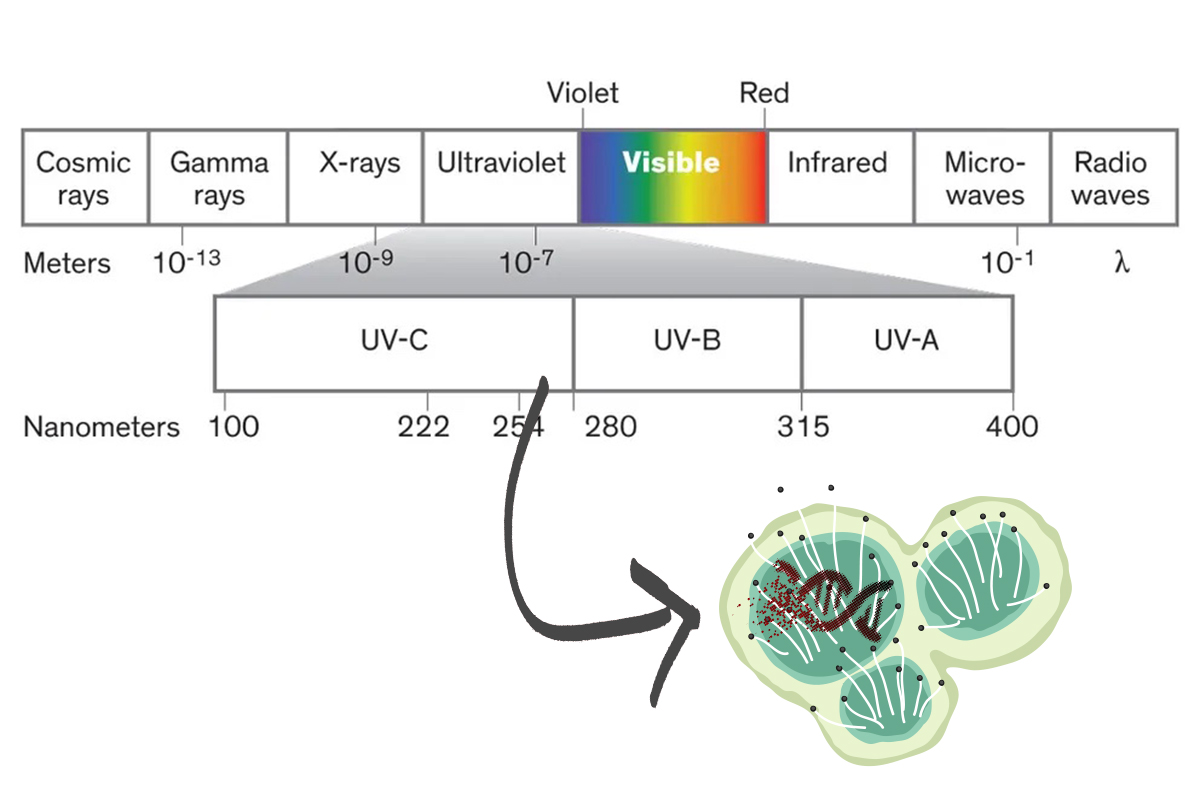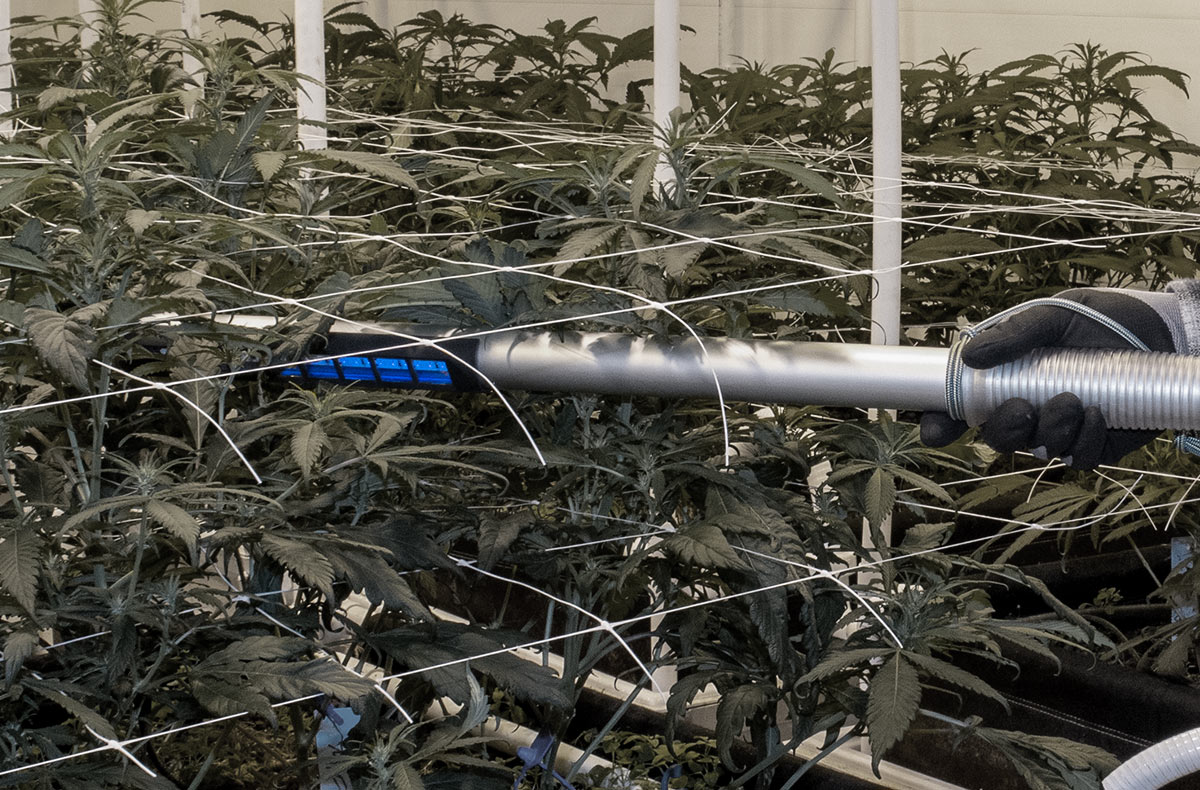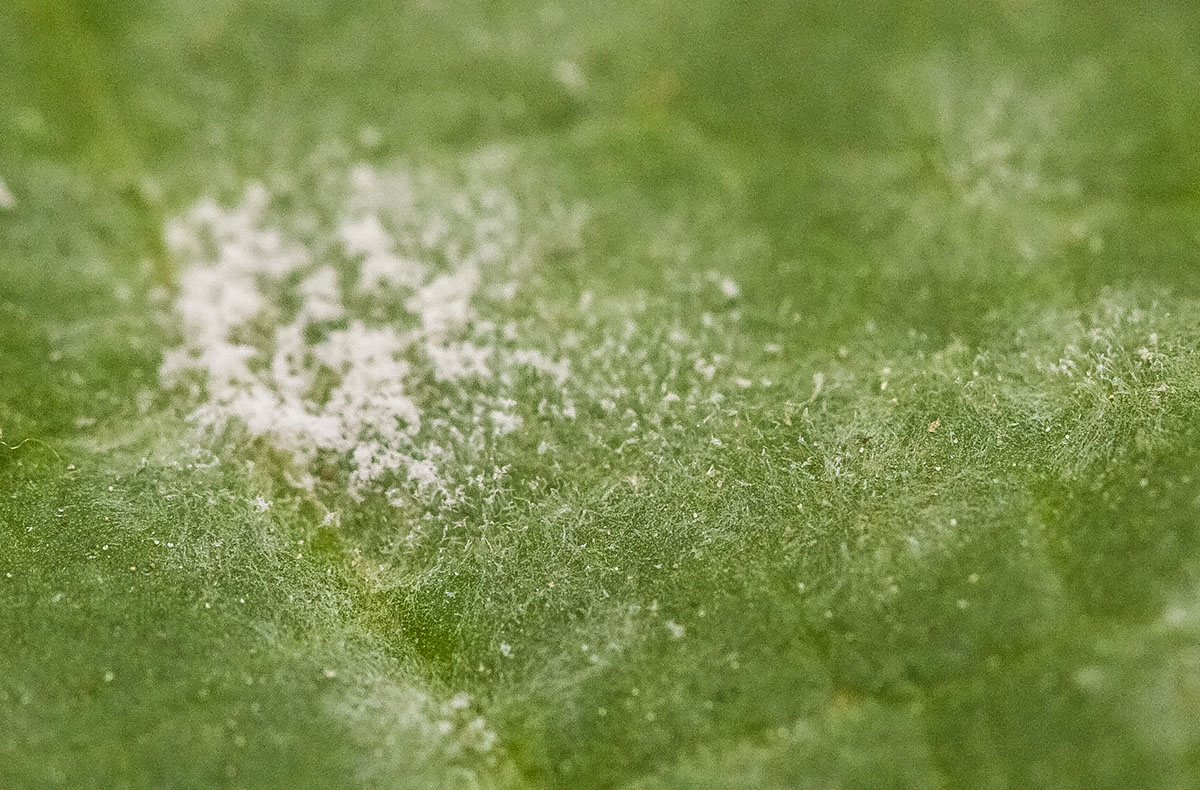
Powdery mildew is a fungal disease affecting a wide range of plants. It is a common, costly diseases for nursery plants such as flowers, vegetables, and woody plants. Temperature, relative humidity, light, and air circulation contribute to powdery mildew prevalence. Powder mildew leaches plant nutrients and lowers yields. In cannabis, powdery mildew also means failed microbial testing if concentrations are over the legal limit.
Powdery mildew requires immediate quarantine and clean. In large indoor grow operations, quarantine still means a large quantity of plants have been or are exposed. Spores hide on any surface. You must disinfect all surfaces (including ventilation, fans, all equipment, ect.) top-to-bottom, inside and out to kill any spores present. Otherwise, powdery mildew will break out again. A layered approach to disinfection will set you up for success. A simple solution of bleach and water will disinfect surfaces that can get wet and are not sensitive to corrosion. For those moisture sensitive or hard to reach areas, UVC will destroy powdery mildew spores in seconds. UVC is also a great way to reduce chemical use. Scrubbing your air is a step often overlooked but equally important to catch those airborne spores. Disinfection and quarantine, in conjunction with remediation efforts listed below, will position you for success in halting the spread of powdery mildew and preventing it from occurring again.
Organic Remediation
** Note: If growing organic, commercial products you use must be OMRI approved. You also need to make sure products are approved for use by applicable state and federal agencies.
- Milk: A popular solution for decades. It is thought that the protein in milk offers an antiseptic-like effect when combined with sunlight (or UVA/UVB exposure).
- Sodium Bicarbonate: Household baking soda slows the spread of powdery mildew (and blight) without adversely affecting plants. It creates an alkaline environment on the leaf preventing powdery mildew from colonizing (powdery mildew needs a neutral pH to imbed, survive, and thrive).
- Garlic: Garlic contains sulfurs. Sulfur treatments are available in stores, but be wary of added chemicals and metals. To make a garlic spray as a remedy, use entire bulbs, not just the cloves. Do not spray directly on leaves when in direct sunlight or during the heat of the day.
- Compost tea: Compost tea provides many benefits outside of powdery mildew remediation. It is thought to inoculate plants with beneficial organisms that either create a physical barrier against harmful pathogens or competes with and attacks them. There are mixed reviews regarding the actual effectiveness of compost tea in combating powdery mildew. Regardless, the overarching positive effects it has on plants make it a worthwhile step to incorporate into your grow operation.
- Apple Cider Vinegar: Acetic acid is the component in vinegar that hinders powdery mildew. But if used in too high a quantity, it will burn plants.
- Plant oil blends: Blends of organic plant oils (such as garlic, corn and others) slow powdery mildew, especially when used in conjunction with baking soda.
- Bacteria: Bacillus subtilis and Streptomyces lydicus are naturally occurring bacteria. Bacillus subtilis feeds on powdery mildew. Streptomyces lydicus establishes attacks powdery mildew on the surface at the binding site. Be wary of your source for these bacterial components. They may have added ingredients that don’t meet organic standards.
- Copper Sulfate: Copper Sulfate acts as both a fertilizer and a fungicide. It is detrimental to plants if applied excessively or if the soil already contains high levels of copper. It is known to affect plant flavor.
- Hydrogen Peroxide: Milk has proven more effective and faster acting than hydrogen peroxide in testing. But hydrogen peroxide still damages and slows powdery mildew.
Synthetic Remediation
- Foggers or Bombs: Popular for dealing with pests like mites, foggers and bombs also exist for fungal diseases. They are highly flammable and toxic if inhaled. The grow space requires at least 24 hours of good ventilation to ensure the product is completely cleared before it is safe for human entry. Foggers can damage plants if triggered too close or if used in small spaces (do not release in spaces smaller than recommended on packaging).
- Fungicides: The most common fungicides for powdery mildew are demethylation inhibitors (DMIs) and quinone outside inhibitors (QoIs).
- DMIs take a systemic approach. They are taken up into the plant’s tissue and then absorbed by powdery mildew. They inhibit biosynthesis in powdery mildew, but do not prevent the germination of spores already present.
- QoLs operate external to both plants and powdery mildew. They inhibit respiration and spore germination.
- DMIs and QoLs are best when used in conjunction with one another.
Build Your Defenses
Your best defense against powdery mildew is always prevention. But we know outbreaks happen and the rush to prevent spread is a challenging endeavor. Look around your grow operation? How realistic is it for you to access and clean every surface of spores? Do you have protocols and tools in place to help you prevent contamination in the first place? To act quickly to mitigate? Contact us today to learn how our easy to use, easy to clean products are the most hygienic option out there for disinfecting plants and surfaces and capturing airborne contaminants.


